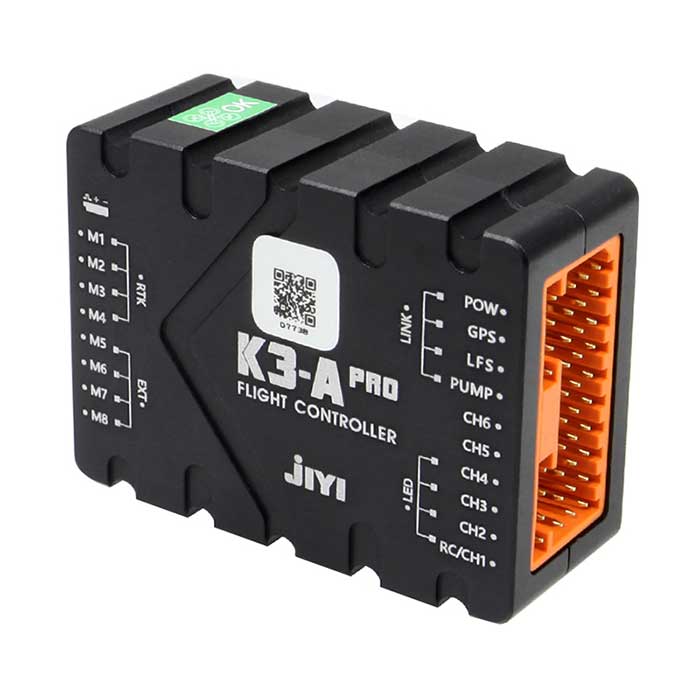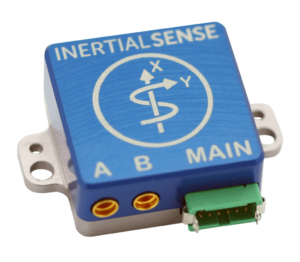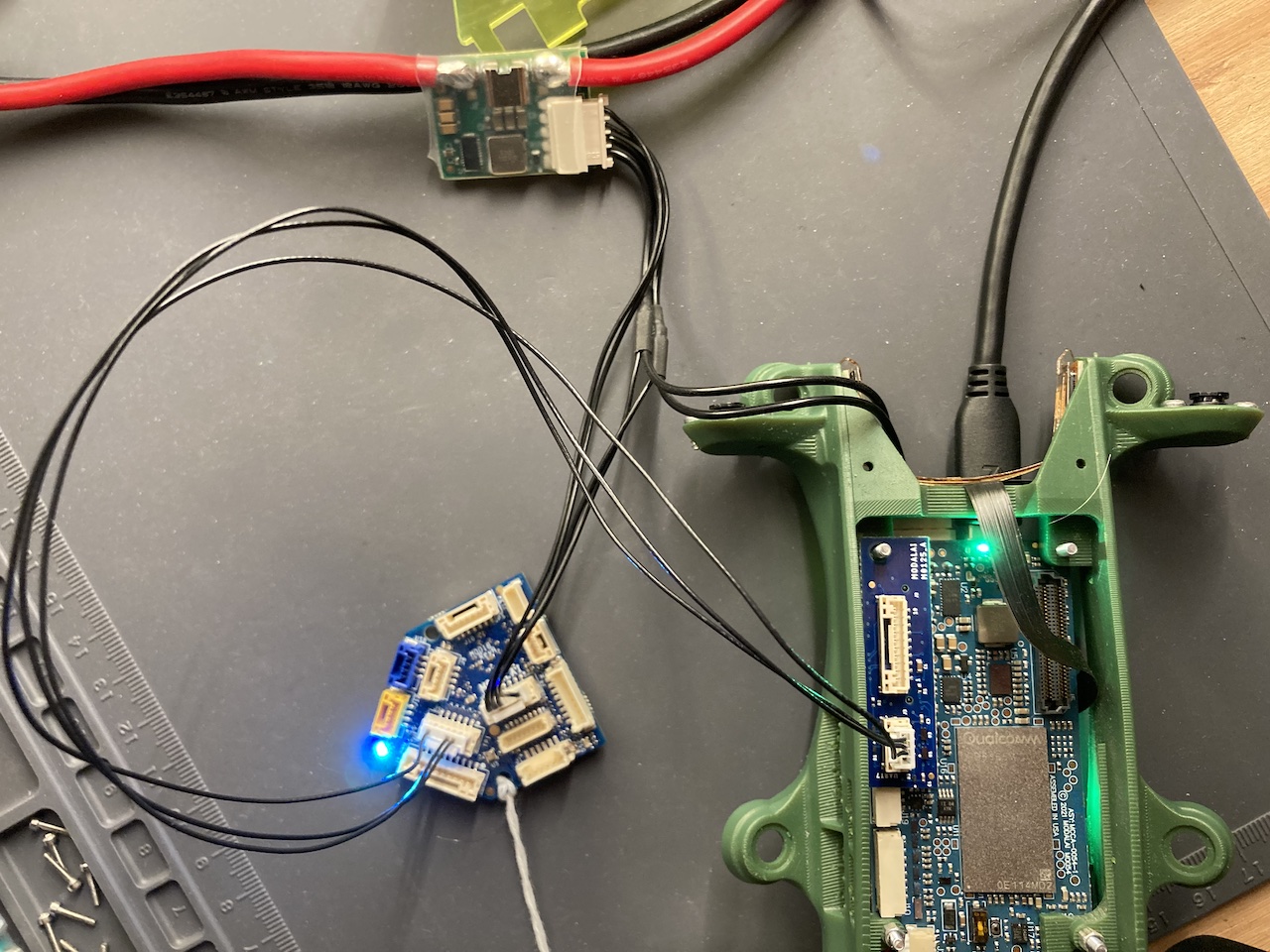SparkNavi Drone Flight Controller and GNSS/INS Made in Taiwan: Precision and Technology
SparkNavi Drone Flight Controller and GNSS/INS Made in Taiwan: Precision and Technology
Blog Article
Exploring the Duty of Drone Trip Controllers in Enhancing Flight Security and Navigating Effectiveness
The advancement of drone modern technology has actually considerably raised the importance of flight controllers, which offer as the brain of these aerial vehicles. By incorporating real-time data from a variety of sensing units, trip controllers enhance trip security and navigation effectiveness, guaranteeing that drones can operate smoothly also in intricate environments.

Comprehending Trip Controllers
Trip controllers are integral parts in the performance of drones, functioning as the brains that manage and maintain trip operations. These sophisticated gadgets process data from different sensing units, consisting of accelerometers, gyroscopes, and GPS, to make certain that the drone maintains its designated flight path. The trip controller analyzes this information and implements commands based upon pre-defined formulas, making it possible for the drone to react to ecological adjustments, such as wind or barriers.
The main function of a flight controller is to preserve stability throughout trip. It achieves this by making real-time modifications to the drone's motors and control surface areas, guaranteeing balance and control. In addition, modern flight controllers incorporate advanced features such as waypoint navigating, enabling automated flight paths and enhanced operational efficiency.
Understanding the style of trip controllers is important for both professionals and enthusiasts. They commonly include a microcontroller, firmware, and various interfaces for sensing unit input and interaction. As innovation developments, flight controllers have actually become extra small and capable, integrating fabricated intelligence to boost decision-making processes and adjust to complex trip situations. This development indicates a pivotal growth in the drone industry, leading the way for more advanced applications and more secure procedures.
Secret Elements of Trip Stability
Accomplishing optimum trip stability in drones depends on numerous key parts that work in concert to make sure regulated and smooth operations. Central to this stability is the trip controller itself, which refines information from various sensors to preserve the preferred trip mindset. This consists of accelerometers and gyroscopes that measure motion and positioning, permitting for real-time changes to the drone's placement.
An additional important component is the digital rate controllers (ESCs), which manage the power delivered to the motors. By carefully tuning motor speeds in reaction to flight controller commands, ESCs assist preserve balance and neutralize disruptions triggered by wind or unexpected motions.
Furthermore, the style of the drone's structure plays an essential function in flight security. A well-structured frame reduces resonances and boosts the total wind resistant account, adding to smoother trip characteristics. The assimilation of sophisticated algorithms within the flight controller help in anticipating changes, ensuring a receptive and versatile flight experience.
With each other, these elements develop a natural system that boosts a drone's stability, permitting precise handling and enhanced efficiency in different flight problems.
Navigating Efficiency Strategies
Effectiveness in navigation is essential for optimizing drone procedures, especially in complex settings. Efficient navigating methods improve the ability of drones to go across difficult surfaces and prevent obstacles, consequently improving functional effectiveness and safety.
One famous technique is the execution of advanced general practitioners and inertial measurement systems (IMUs) that provide exact location tracking and alignment data. These innovations permit drones to calculate optimum flight paths in real-time, taking right into account various factors such as wind problems and potential challenges.
An additional technique includes making use of algorithms for path preparation and optimization. Formulas such as A * and Dijkstra's formula can be deployed to figure out one of the most efficient course while reducing power usage and flight time. Additionally, integrating artificial intelligence models can allow drones to adaptively gain from their environments, More about the author enhancing navigating capacities via experience.

Effect on Autonomous Drones
The assimilation of innovative navigation techniques has actually greatly transformed the abilities of independent drones, enabling them to operate with higher autonomy and accuracy. SparkNavi drone flight controller and GNSS/INS made in taiwan. These enhancements are mostly connected to innovative trip controllers that utilize real-time data handling and sensing unit blend, allowing drones to navigate complex environments perfectly
The influence on independent drones prolongs beyond simple navigating; it incorporates enhanced barrier evasion, boosted security during dynamic conditions, and raised mission reliability. By leveraging algorithms that integrate equipment understanding and expert system, drones can adapt to altering scenarios, making notified decisions that optimize their trip paths while reducing risks.
Moreover, the execution of durable flight controllers has actually assisted in the execution of complicated tasks, such as airborne assessments, delivery solutions, and agricultural monitoring, with marginal human treatment. This capability not just streamlines procedures however likewise decreases human mistake, consequently enhancing overall safety.
As an outcome, the operational extent of self-governing drones has broadened substantially, making them important tools in different industries. Their capacity to perform successfully in varied situations emphasizes the vital role that advanced trip controllers play fit the future of unmanned airborne systems.
Future Trends in Trip Control
Regularly, developments in flight control modern technology are poised to redefine the landscape of drone operations in the coming years. Arising trends indicate a substantial shift towards boosted expert system (AI) assimilation, enabling trip controllers to process real-time information extra efficiently. This development will certainly facilitate enhanced decision-making capacities, enabling drones to adjust to vibrant environmental conditions autonomously.
Additionally, the execution of device discovering formulas is expected to enhance predictive maintenance, consequently decreasing downtime and extending the lifecycle of drone parts. This proactive strategy to maintenance will be important as drone applications increase across various sectors, from farming to logistics.

.png)
Lastly, developments in protected interaction procedures will certainly attend to safety and security and regulatory concerns, guaranteeing that drones can operate effortlessly in busy airspaces (SparkNavi drone flight controller and GNSS/INS made in taiwan). Jointly, these fads point in the direction of a future where trip control systems are not just smarter and extra reliable yet also capable of operating safely in an increasingly integrated airspace
Conclusion
In verdict, drone flight controllers are important to boosting flight security and navigating efficiency with the innovative processing of sensor data. By preserving optimum trip perspectives and using innovative algorithms for path optimization and challenge evasion, these controllers significantly contribute to the freedom and functional safety and security of drones. As technology remains to progress, better advancements in flight control systems are anticipated, guaranteeing better performance and broadened capacities in the world of unmanned airborne vehicles.
By incorporating real-time information from a variety of sensing units, trip controllers boost trip security and navigating performance, ensuring that drones can operate efficiently also in intricate settings.Trip controllers are essential elements in the functioning of drones, serving as the brains that support and handle flight operations. Additionally, contemporary flight controllers integrate sophisticated features such as waypoint navigation, permitting for automated trip courses and improved operational performance.
Central to this security is the flight controller read review itself, which processes data from numerous sensors to preserve the preferred flight perspective.In verdict, drone trip controllers are essential to enhancing flight stability and navigation effectiveness with the sophisticated handling of sensor data.
Report this page